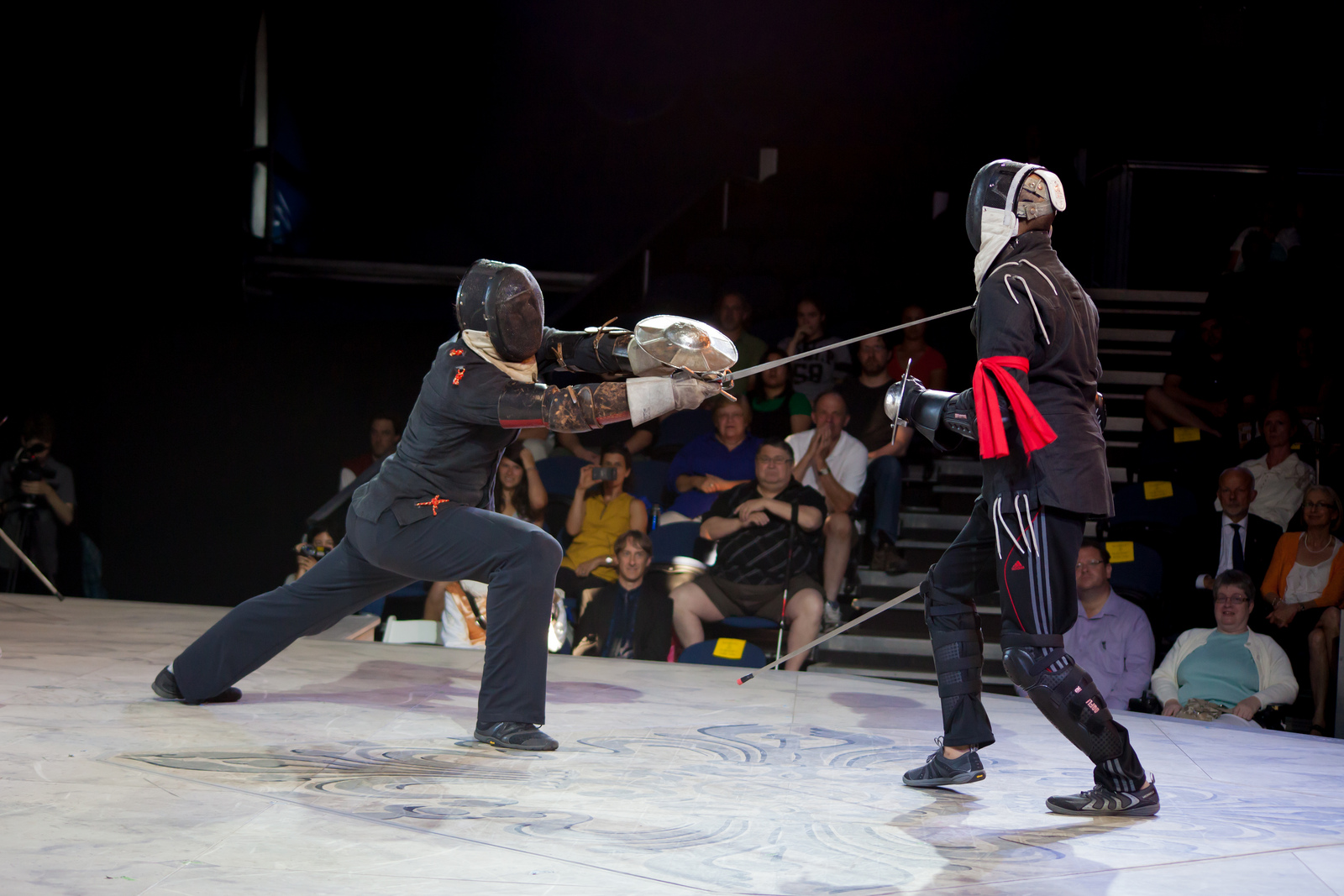(Warning, this is a very sword fighting training oriented post)
So myself and a group of my senior students at Academie Duello are preparing for a rapier fencing tournament at the end of January hosted by the Society for Creative Anachronism called Ursulmas. This event typically attracts between 45 and 60 participants in the tournament including high quality competitors and some WMA cross-over beyond our school.
I find this event to be a particularly useful place to bring students as there is a great diversity in the backgrounds, abilities, techniques applied, and nature of the fighters. There is a good mix of both martial artists and martial sportists as well, so the training environments that people come from are quite diverse.
So as part of our preparation we have decided to put together a training regime even though it will be fairly tight as the event is only 4 weeks away — but before I get into that I want to answer the question of “why we are putting together a training regime”. The truth is there isn’t necessarily a lot of need. Most of my students fence and practice more than the average hobby practitioner out there (largely because Duello has a class scheduled and facility that allows for this). Also most of the fun of this event is in fencing with a diverse crowd; winning the tournament is rather secondary. However the truth is that it’s fun to have an event to work toward, an objective to train for and to provide focus for a more intense period of training.
I established the outline of our training regimen, the day I wrote this, at our weekly sparring practice and I thought I would share. We have two primary components:
1. Martial Training
Conditioning our bodies to martial techniques through drills and tactical exercises, as well as practicing and preparing our strategic approaches against the various competitive strategies we might encounter.
2. Physical Training
Preparing our bodies for endurance, power, and resilience. This will include mechanical alignment and mobility training, plyometric exercise, endurance training, and power training.
Our current schedule will alternate between physical and martial training with a rest day on day 7. Two of our martial training days will focus on tactical training and drills, some targeting specific circumstances we expect to encounter more than others. One martial day will focus on sparring strategy and combat analysis.
I’m taking advantage of our in-house health and fitness expert Meghan O’Connel to help design a complimentary training program – I’ll outline more of the details in a separate post.
Our group of participants is about 8 people and the schedules of the group don’t all necessarily mesh, however making a training commitment as a group can be really useful to help keep people on track. It’s completely opt in, but again everyone who is on board is eager for the experience and focus. We have set martial training times (I already have my own training schedule through the week) and we’ll try to get together where possible on the physical training days but mostly our plan is to use a shared group (like we did for the 30 for 30 challenge) to share our progress on a daily basis and help hold each other accountable and support each other in our progress toward the event.
I’m looking forward to the experience. I enjoy sharing training experiences with others and find that it always makes the experience deeper and more enjoyable. I’ll share more as we go.
